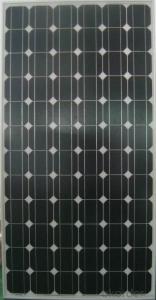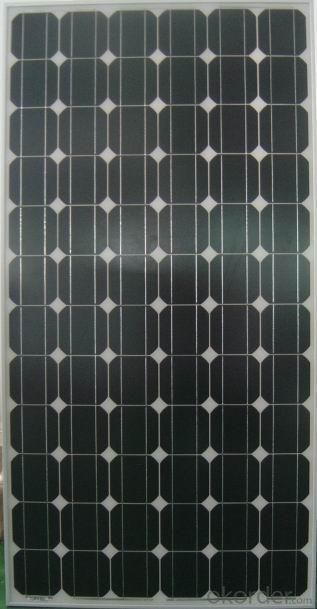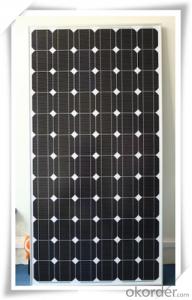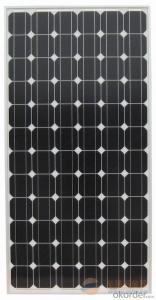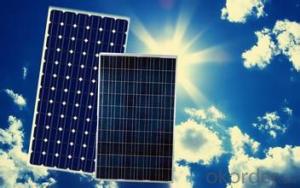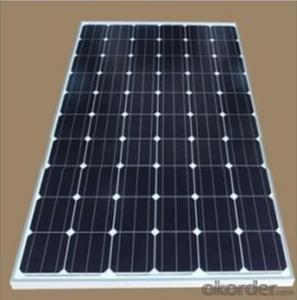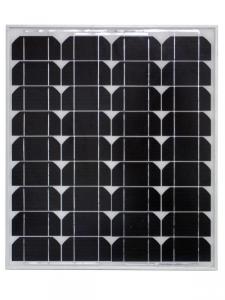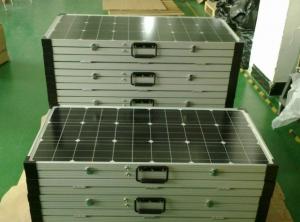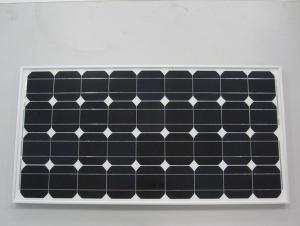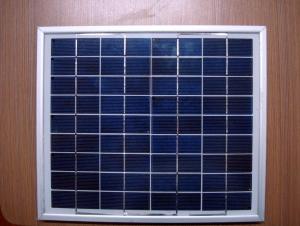160w OEM Monocrystalline Silicon Sun Power Solar Panels for Rooftop CNBM
- Loading Port:
- Qingdao
- Payment Terms:
- TT OR LC
- Min Order Qty:
- 10 set
- Supply Capability:
- 300000 set/month
OKorder Service Pledge
OKorder Financial Service
You Might Also Like
160W OEM Monocrystalline silicon sun power solar panels --- Factory direct sale
Quick Details
| Place of Origin: | Guangdong, China (Mainland) | Brand Name: | CNBM | Model Number: | SGM-2F-160W |
| Material: | Monocrystalline Silicon | Size: | 505*1005*70mm | Number of Cells: | 36pcs |
| Max. Power: | 160Wp | Modes of Supply: | Factory Directly Supply | OEM panel solar: | Acceptable |
| Cell Brand: | Taiwan solar cells | Cell efficiency: | 15.94%-18.10% | Frame: | Aluminium Alloy |
| Certificates: | TUV, IEC, CE, ISO9001/14001 and RoHS |
Packaging & Delivery
| Packaging Details: | carton box & wooden pallet [ solar panels ] |
| Delivery Detail: | 10-15working days after order confirmed |
Product Description
1.with controler, cable, mounting and bag, ready to use
2.High transmittance low iron tempered glass with enhanced stiffness and impact resistance
3.Unique frame design with high mechanical strength for easy Installation.
4.Advanced encapsulation material with multiplayer sheet lamination to provide efficient protection from the severest environmental conditions
5.Outstanding electrical performance under high temperature and low irradiance conditons
6.it can be widely used for home, for camping, for emergency
Electrical Character
| Electrical Characteristics | |
| Model | SGM-2F-2x80W |
| Cells size (mm): | 156*78 |
| Cells per module: | 36pcs |
| Module size (mm): | 505*1005*70mm |
| Power tolerance: | +/-3% |
| Nominal peak power(WP): | 160w |
| Nominal voltage(V): | 17.7 |
| Nominal current (A): | 9.03 |
| NOCT: | 45+/-2degree |
| Voltage temperature coefficient: | -0.33%/degree |
| Current temperature coefficient: | +0.05%/degree |
| Power temperature coefficient: | -0.23%/degree |
| Open circuit voltage (Voc): | 21.6 |
| Short cirsuit current(Isc): | 9.76 |
| Conversion efficiency: | 18.40% |
| Product name : | protable solar panel |
| Max system voltage: | 1000V DC |
| Surface Maximum Load Capacity | 60m/s(200kg/sq. m) |
We can offer:
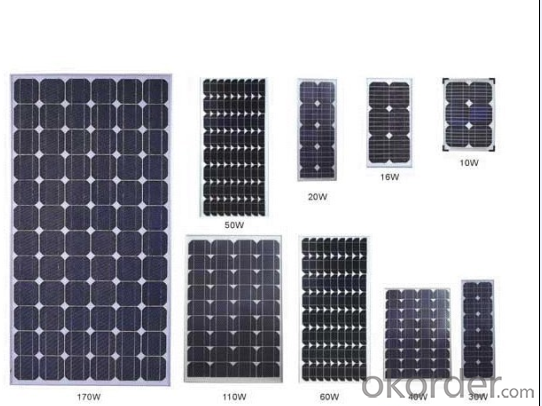
- Q: i see these things all over the internet on how to make 'home made solar panels' but all of them require you to buy the solar cells and nothing tells you how to make your own. So how can you make your own solar cells?
- Found this video demonstrating the process of making home made solar cells. I do not think this method would be very practical for an off the grid home system.
- Q: Why can not the solar panel load directly?
- Power supply must be a number of individual battery strings, connected in parallel and tightly packaged into components.
- Q: Do solar panels work in cloudy weather?
- Yes, solar panels do work in cloudy weather. While they may not produce as much electricity as they would on a sunny day, they can still generate power from diffused sunlight. Cloudy conditions can reduce the efficiency of solar panels, but they are still capable of converting light into electricity, making them a viable option for renewable energy even in less sunny areas.
- Q: Can solar panels be installed on water bodies or reservoirs?
- Yes, solar panels can be installed on water bodies or reservoirs. This is known as a floating solar power plant or floating photovoltaic system. It involves placing solar panels on floating platforms that are anchored to the bottom of the water body or reservoir. This innovative approach allows for the utilization of otherwise unused space, reduces evaporation, and provides cooling benefits to the solar panels, increasing their efficiency.
- Q: When people buy small solar panels, what are the steps to making it actually charge or run something.. I'm completely new to this of course and im curious. what kinda of wire and other devices are needed and how do you attach the wire and everything..
- Small solar panels produce almost no power that matters to anything. A whole square meter may produce 80 Watts when facing the noon sun in Arizona. take that down to 28 Watts in Erie Pa. The 80 Watts can charge a 2 volt battery at about 8 amps times 6 hours, or 48 Amp hours per day in Arizona or perhaps 5 amp hours/day in Erie. The amount of energy you can save declines as the battery is more charged so you need to use up the power stored before you have more to save. To do that charging you need a circuit that will carry 8 amps, including a voltage regulator. So, if your circuit can stand 20 amps the person in Arizona can run 2 square meters of panel. It may seem strange but the same is true for the person in Erie. The person in Erie has to allow for the maximum output of the panel, not the expected average. The person in Erie will occasionally have really clear skies and put out maximum rated amps. The amperage that the batteries can put out at maximum should not be used. That will destroy the battery. One puts a breaker on each output circuit to protect the circuit and a breaker that limits battery output to 20 amps based on a battery rated at 800 amps. That 800 amps is surge capacity. One or two panels does not really justify having this capacity for battery and circuitry. I can think of using it to provide an emergency LED lighting system.
- Q: i need to cut down on electricity bills, and so i was wondering if someone could give me step-by-step instructions, or websites that have step-by-step instructions on how to build an electricity generating solar panel.
- The idea behind building your own was to get defective and broken solar cells from the manufacturer, preferably for free though many now charge for them. These are cells that are either cosmetically blemished, cracked or otherwise broken during manufacturing and transportation. As each cell fragment could have very different voltage and current characteristics, you have to manually measure the voltage and current characteristics, sort them and then wire them in parallel or in serial to achieve the desired voltage and current characteristics for the panel. Wiring in parallel increases the current while wiring in series increases the voltage, the current capacity of cells in series will be that of the lowest current capacity cell in that series hence you need to match fragments up to wire in parallel till you have enough current capacity to participate as a cell in the series. Cell fragments can only be wired in parallel if they have the same voltage output. It's painstaking work and it's difficult to place all the irregular shaped cells onto the solar panel in a layout that efficiently uses the space so your solar panels will likely be much larger than commercial ones. You could augment them with Fresnel lenses since the cells don't occupy as much of the available surface area hence focusing the light onto the cells rather than the board will help with efficiency. Practice your soldering skills cause you don't want to have to go back in to figure out where that cold solder joint is. If you're real lucky you can get a supply of blemished cells but the cheapest ones are the broken cells.
- Q: How much energy can a solar panel generate?
- The amount of energy a solar panel can generate depends on several factors, including the size and efficiency of the panel, the amount of sunlight it receives, and the geographical location. On average, a standard residential solar panel can generate between 250 to 400 watts of power per hour, or around 2 to 4 kilowatt-hours per day. However, larger commercial or utility-scale solar panels can generate much higher amounts of energy, ranging from several kilowatts to several megawatts.
- Q: So I'm trying to figure out what to ask for my birthday because its one of the few times I can get stuff for no reason, like stuff I don't normally go to the store to buy. (i dont go to the store to get much at all anyway).Anyway, I'm interested in solar panels and led and electronics and i was wondering if there is anything not over expensive that would be cool. Some things I'm interested in:solar, wind, water energyGadgets (multitools, swiss army knives)Vibram fivefingersdrawingmaking stuff (duct tape wallets, stuff out of altoids containers)basically technology and outdoors-gear stuffoh and im 6 turnin 7 male.
- solar panel is expensive, but small solar panel is not expensive, for example, 5w solar panel, solar light also not expensive led light also not expensive. i am not sure about other stuff that you said
- Q: does anybudy know about solar panels? plz reply me
- How Solar Cells Work by Scott Aldous Inside This Article . Introduction to How Solar Cells Work 2. Photovoltaic Cells: Converting Photons to Electrons 3. How Silicon Makes a Solar Cell 4. Anatomy of a Solar Cell 5. Energy Loss in a Solar Cell 6. Solar-powering a House 7. Solving Solar-power Issues 8. Solar-power Pros and Cons 9. Lots More Information 0. See all Physical Science articles You've probably seen calculators that have solar cells -- calculators that never need batteries, and in some cases don't even have an off button. As long as you have enough light, they seem to work forever. You may have seen larger solar panels -- on emergency road signs or call boxes, on buoys, even in parking lots to power lights. Although these larger panels aren't as common as solar powered calculators, they're out there, and not that hard to spot if you know where to look. There are solar cell arrays on satellites, where they are used to power the electrical systems. You have probably also been hearing about the solar revolution for the last 20 years -- the idea that one day we will all use free electricity from the sun. This is a seductive promise: On a bright, sunny day, the sun shines approximately ,000 watts of energy per square meter of the planet's surface, and if we could collect all of that energy we could easily power our homes and offices for free.
- Q: I have in mind a small solar panel that could be plugged into a wall socket. Do I need a converter or some kind of interference between the two power sources so there aren't any unpleasant explosions? I don't know much about this sort of thing so please be nice.
- You can use a solar panel to heat water, and you can generate electricity, but you can't plug it into a wall socket. The most effective way to save on your energy bill is by heating water. Solar panels that produce electricity, don't store it. They produce it for that particular time, and if you're not there to use it, it's gone. Furthermore, the electricity isn't always regular, it may have peaks and shortages. The best way to tap into that, would be to sell the electricity you produce to the grid, and then buy it back when you use it.
Send your message to us
160w OEM Monocrystalline Silicon Sun Power Solar Panels for Rooftop CNBM
- Loading Port:
- Qingdao
- Payment Terms:
- TT OR LC
- Min Order Qty:
- 10 set
- Supply Capability:
- 300000 set/month
OKorder Service Pledge
OKorder Financial Service
Similar products
Hot products
Hot Searches
Related keywords
